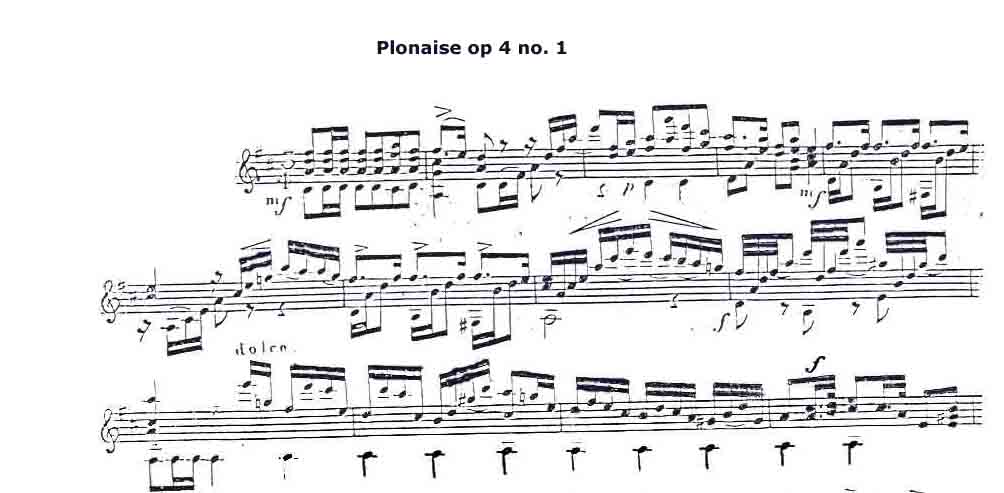|
Rung`s works for guitar. Inspiration from Danish theatre music is to be detected in his Opus 1, where in the Vals (no. 3) I find that the melodic material bears a remarkable resemblance to the Minuet in Frederik Kuhlau´s Elverhoj. Opus 2 consists of two very fine Polonaises, and again in Opus 4 there are two Polonaises and an Allegro and a Presto, all of which demand a considerable mastery of the instrument. It seems most obvious to compare the Polonaises to those by Chopin, especially since, coincidentally, Rung`s Polonaises, Op. 2, were published in the same year (1836) as Chopins first published Polonaises, the Grand Polonaise for piano and orchestra, Op. 22, and, more to the point, the Two Polonaises, Op. 26. Like Chopin´s, Rung`s Polonaises are very folk-like in character and melodic material and show clearly the typical polonaise rhythmical figure (e.g., Op. 4, no.1, bar 1). For both composers the intention has been basically the same: a national-romantic urge to express a strong national consciousness at a time when both countries had experienced war and occupation by foreign troops. With their asymmetrical sections of 7, 11 or 19 bars, the Polonaises of both composers demonstrate a freer than usual attitude to form, which Rung has matched with a free and virtuoso style of playing with frequent use of accelerando and ritardando in order to hold the work together as an organic whole. The collection of études, Op. 3, in which each of the pieces is provided with a little preliminary exercise in the form of a 4-part chorale harmonization, has already been mentioned as bearing a strong resemblance to Sor`s Op. 60. The modest appearance of many of the pieces in the collection of character-pieces, Albumblade, that he published together with his son Frederik, should not cause them to be underestimated; they show Rung`s ability to compose in a variety of styles, as, for example, in one piece, Tyrolienne, which is surely the first instance of jodelling being imitated on the guitar! The pieces are of a quality that would not be unworthy of Robert Schumann. The guitar accompaniments in his songs are, as mentioned above, very simple, but they are appropriate in the context of the words and the melody and always support the songs in a way that deepens the psychological expression.
Henrik Rung (1807-1871), article
|

